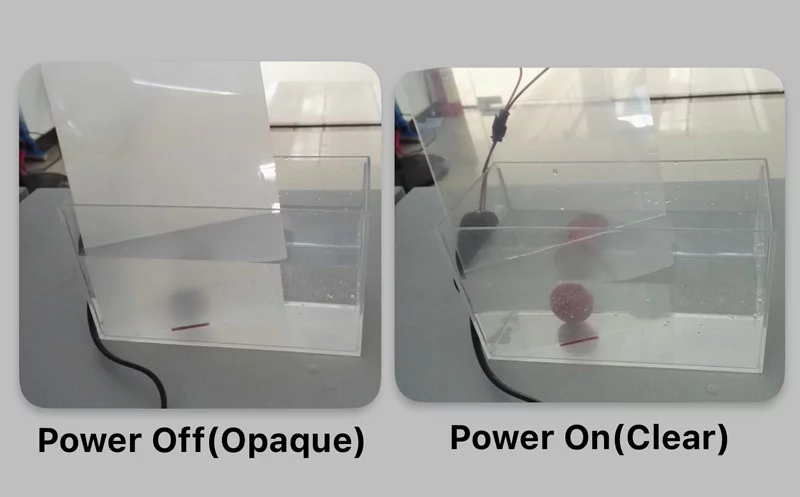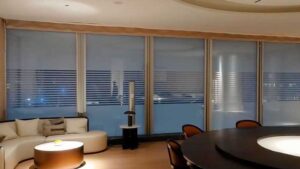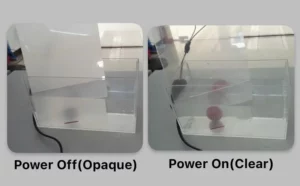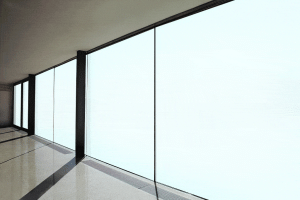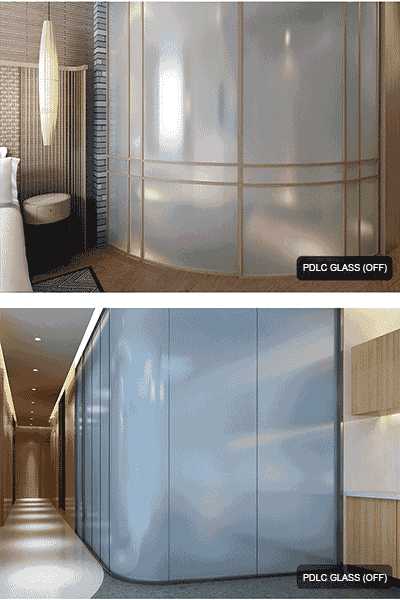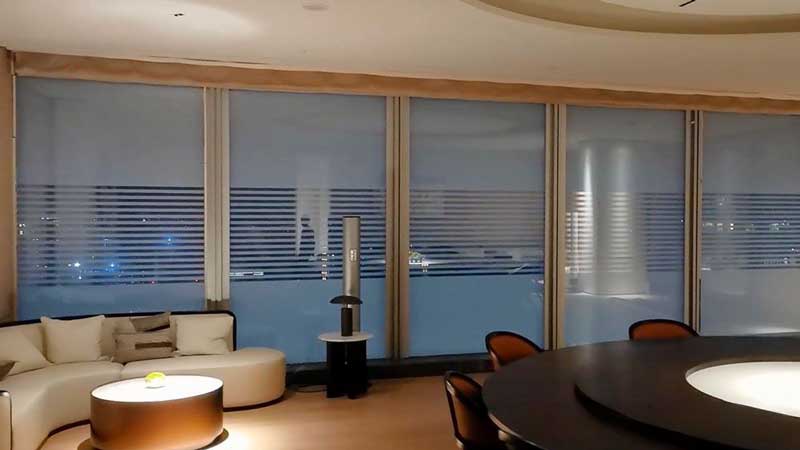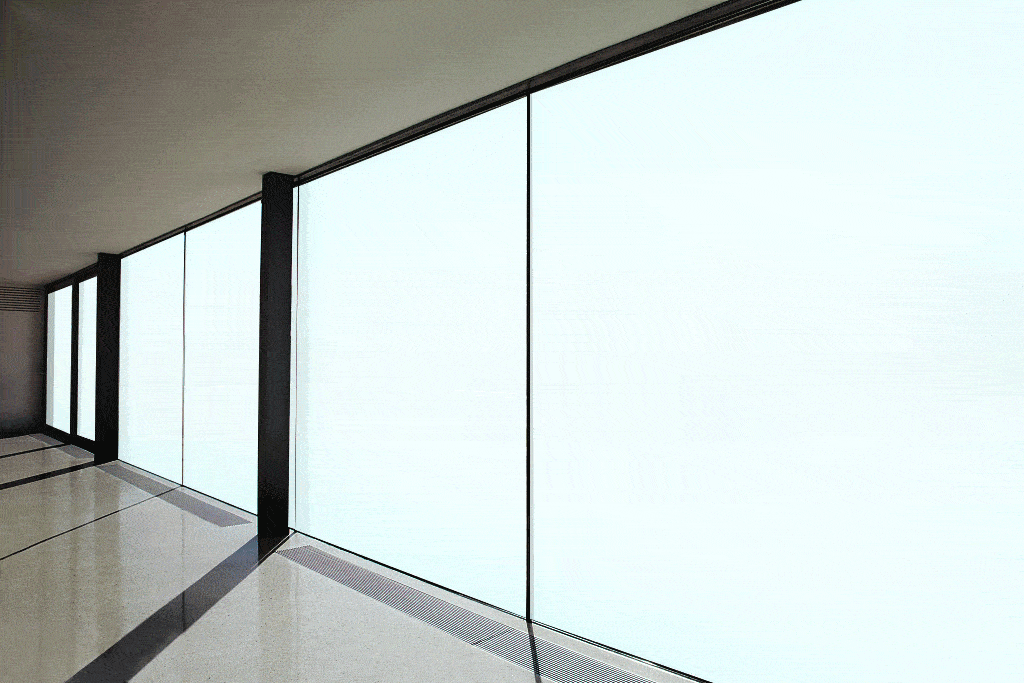Introduction
Smart glass/film, known for its transformative capabilities to switch from transparent to opaque, has revolutionized the way we view and interact with glass surfaces. It’s widely used in architectural applications, automotive sunroofs, and even high-tech privacy windows. But one question that often arises is, “Is smart glass waterproof?” In this article, we’ll delve into the intricacies of smart glass and explore its water-resistant features.
Understanding Smart Glass and Smart Film
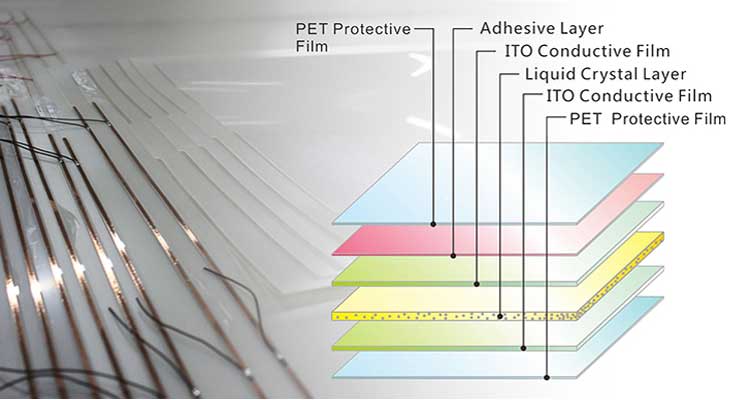
– Smart film is also called PDLC (Polymer Dispersed Liquid Crystal) Film. This technology typically involves a layer of liquid crystal molecules dispersed within a polymer matrix, sandwiched between two layers of ITO films. is an electrically switchable film that Liquid Crystal Polymers laminated in between 2 ITO films. When an electric current is applied, the liquid crystal molecules align to allow light to pass through, rendering the film transparent. When the current is switched off, the molecules disperse randomly, making the film opaque.
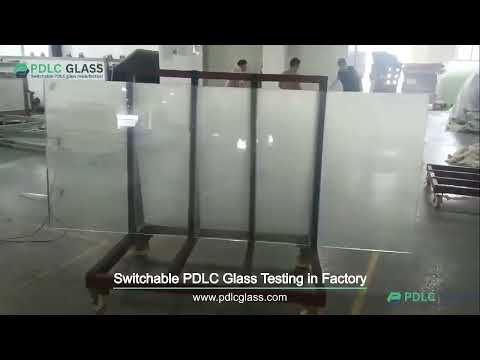
– Smart glass is a smart film sandwiched between two pieces of glass and is installed just like regular glass. Generally, the 12mm thickness smart glass laminated composition is [5mm tempered glass + 0.76mm EVA film + 0.4mm PDLC film + 0.76mm EVA film + 5mm tempered glass].
Both smart glass and smart film work the same way, going from clear to frosted when powered on and off.
Water-resistance but not waterproof
Normally we call smart film is water-resistance, but not totally waterproof. So putting the PDLC film in water for a short time is no problem.
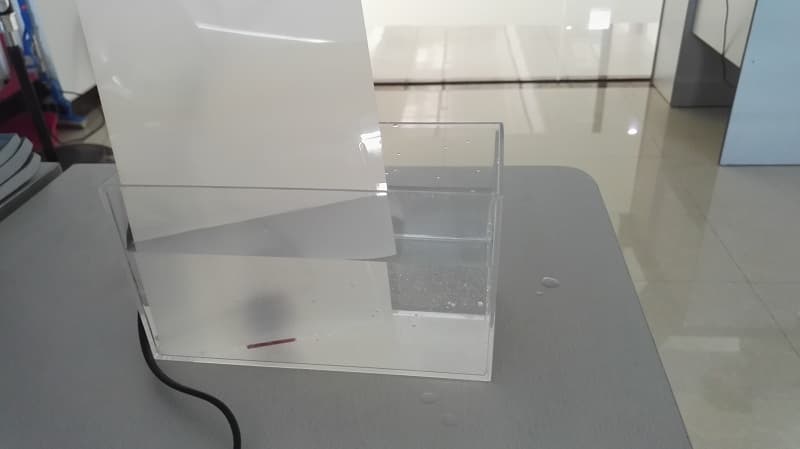
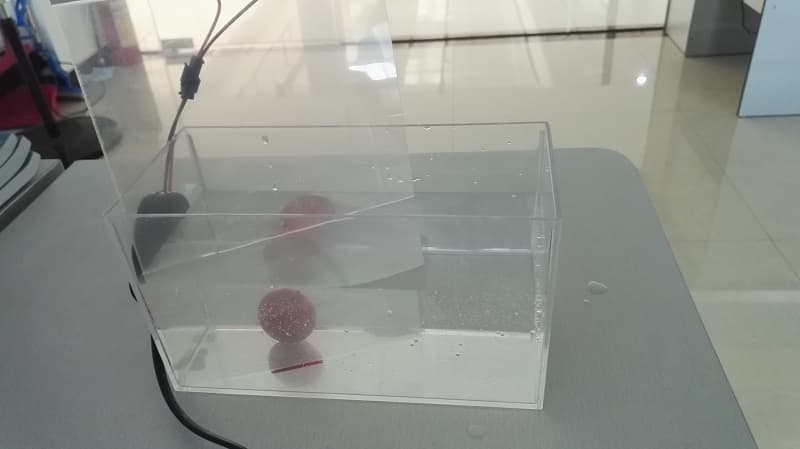
But if put under water for a long time and kept powering on it, the water can come inside the film slightly from the film edge, and then with electricity and water, minor short circuit might happen then gradually damage the film from the edge, after several months, then the film may not work or delamination at the edge(similar like below photo when power on and off).
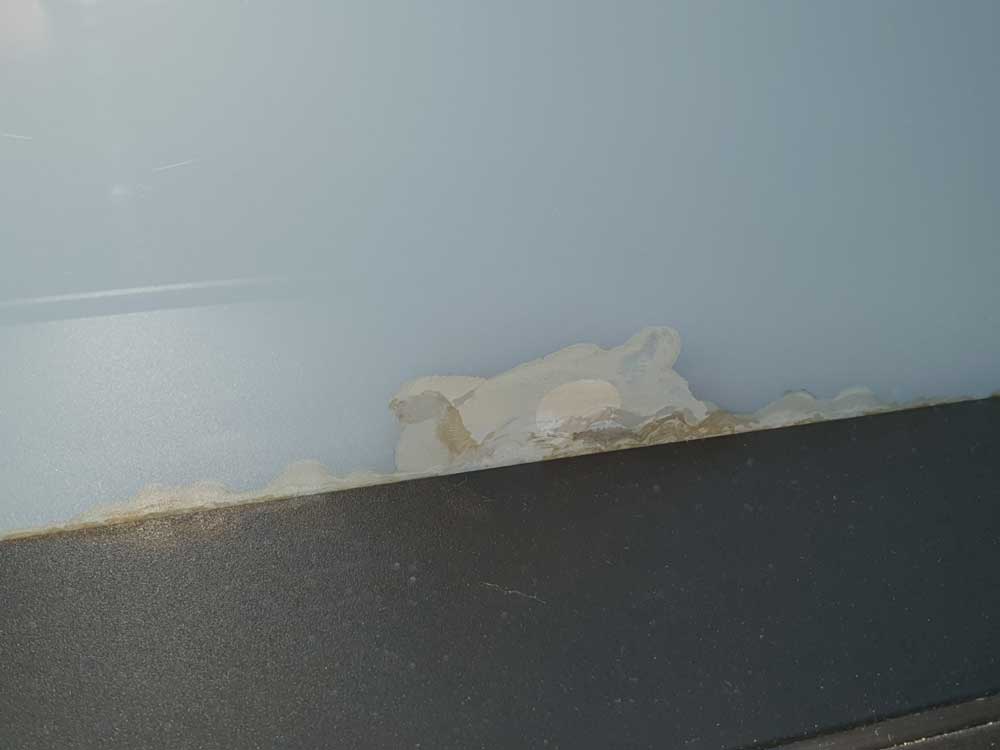
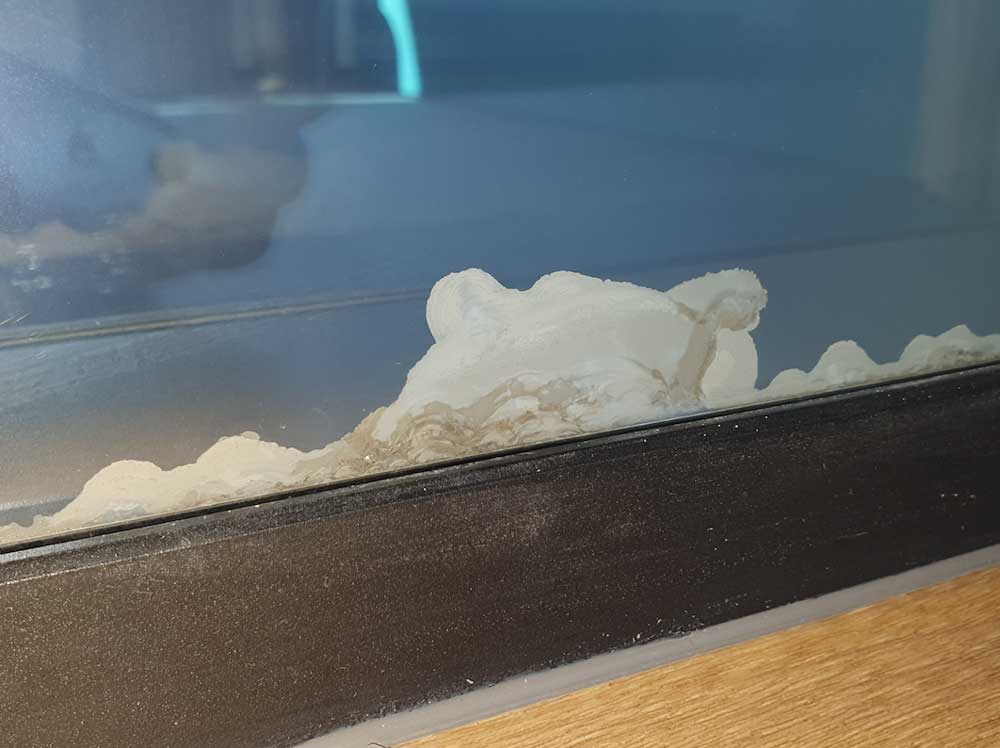
The Water-Resistant Challenge
While smart glass itself is not porous or water-absorbent, there are elements of a smart glass system that may be susceptible to moisture. These include:
- Edges: The edges of the glass panels are potential weak points for water infiltration. Proper sealing is crucial to prevent water from reaching the internal components.
- Electrical Connections: Smart glass requires an electrical current to change its state. Any exposed electrical connections or wiring must be safeguarded against moisture to maintain functionality.
- Installation: The way smart glass is installed can greatly affect its water resistance. Proper framing and sealing methods are essential, especially in outdoor or wet environments.
Water-Resistant Solutions
Smart glass can be made water-resistant with the following solutions:
- Sealing: Ensuring that the edges of smart glass panels are well-sealed is fundamental. Sealant materials that are both durable and waterproof are used to protect the edges from moisture.
- Waterproof Connectors: Electrical connections should be equipped with waterproof connectors to prevent short-circuits or damage from water exposure.
- Framing and Installation: Proper framing and installation techniques are vital. In architectural applications, this includes using specialized gaskets and sealants that create a water-tight seal around the glass.
- Testing: Smart glass systems are rigorously tested for their water-resistant properties before being deployed in real-world scenarios. This includes assessments for resistance to rain, humidity, and other moisture sources.
Applications
The water-resistant features of smart glass make it suitable for various applications:
1. Bathrooms: Smart glass can be used in bathroom windows and shower enclosures, providing privacy at the flick of a switch without compromising water resistance.
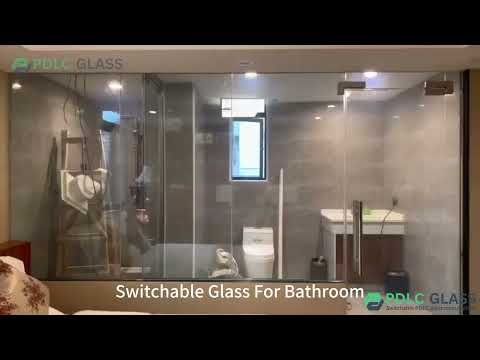
2. Kitchens: Smart glass backsplashes not only offer a modern, sleek look but also enable easy cleaning without worrying about water exposure.
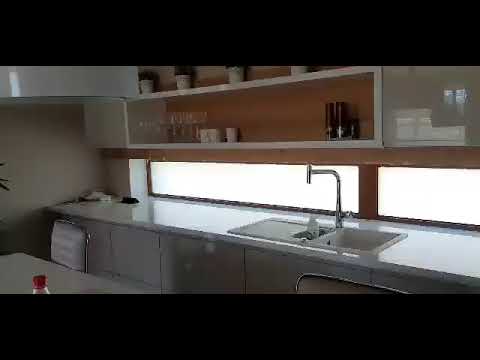
3. Outdoor Use: Smart glass is used in outdoor applications like patio enclosures and poolside privacy screens, where it must withstand exposure to rain and humidity.
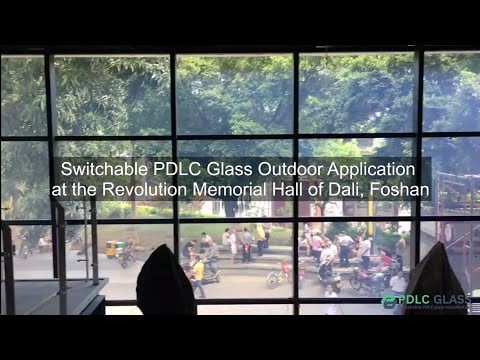
4. Automotive: In cars, smart glass sunroofs can provide shade and privacy while ensuring water resistance during rain or car washing.
Conclusion
Smart glass/film, with its transformative capabilities and adaptability, is indeed water-resistant when installed and maintained correctly. The key lies in addressing potential vulnerabilities such as the edges, electrical connections, and the installation method. By employing proper sealing, waterproof connectors, and meticulous testing, smart glass can provide the best of both worlds – a dynamic glass surface that can withstand exposure to moisture and water. Whether in residential, commercial, or automotive settings, smart glass continues to expand its horizons, offering innovative solutions with a touch of technological marvel.

